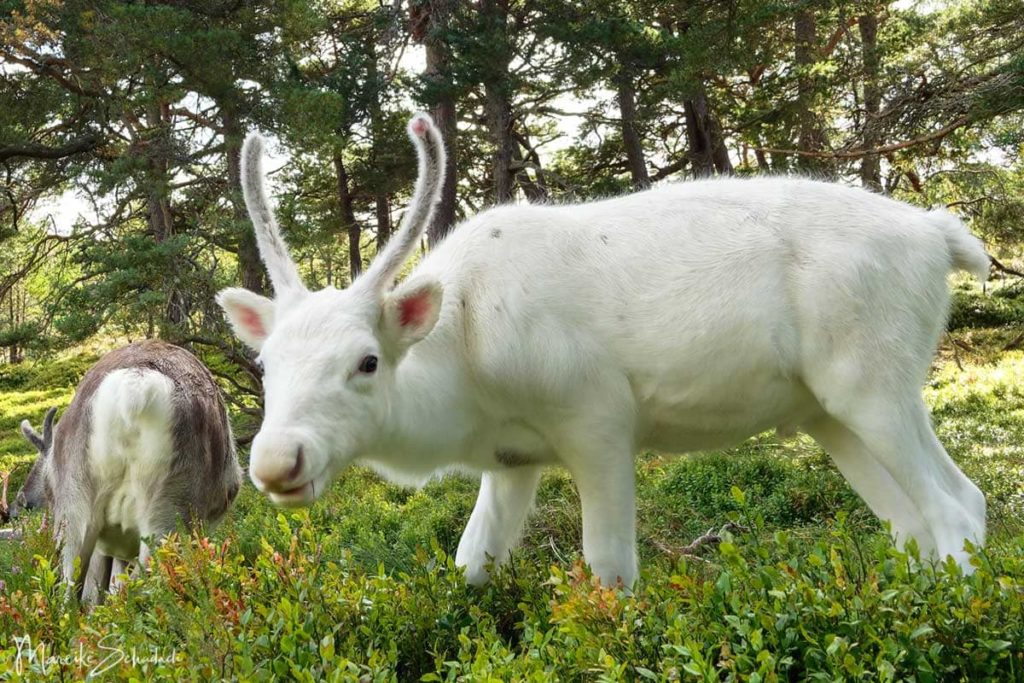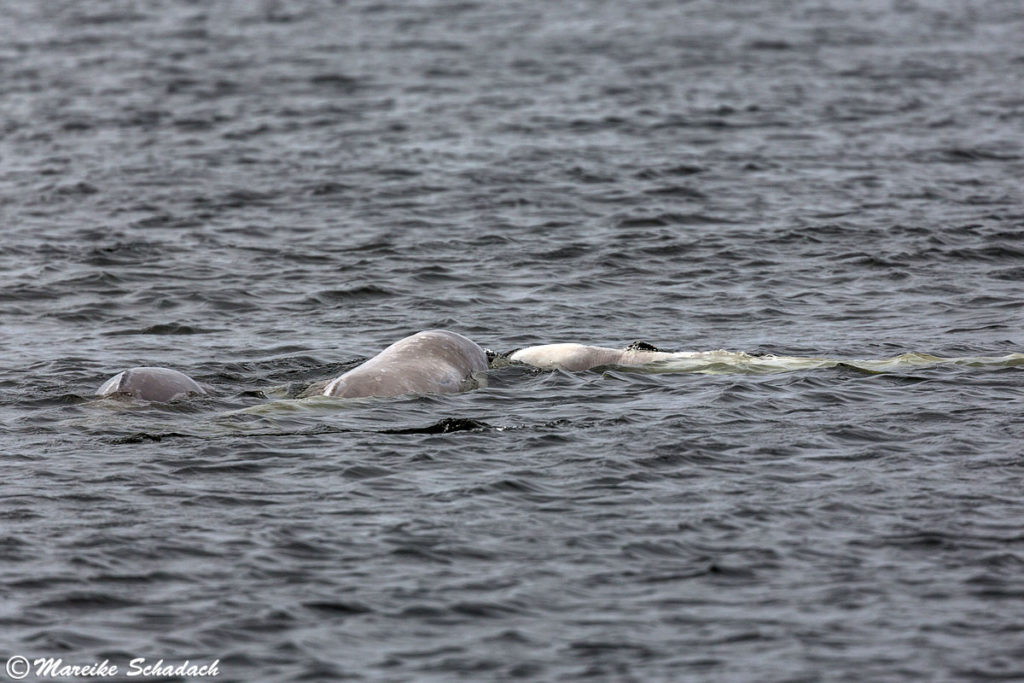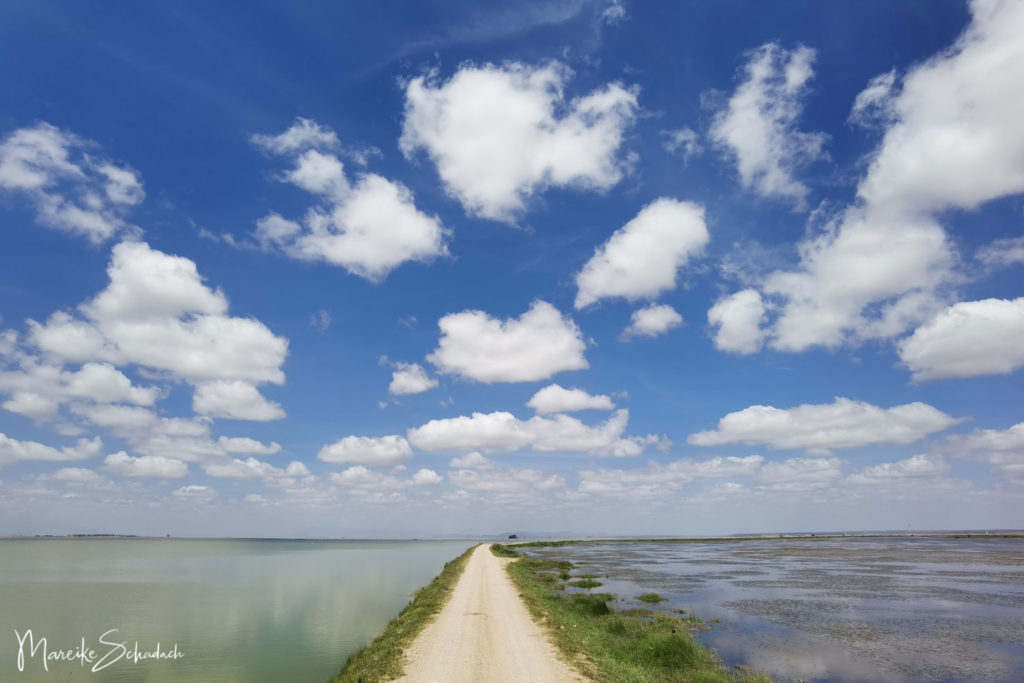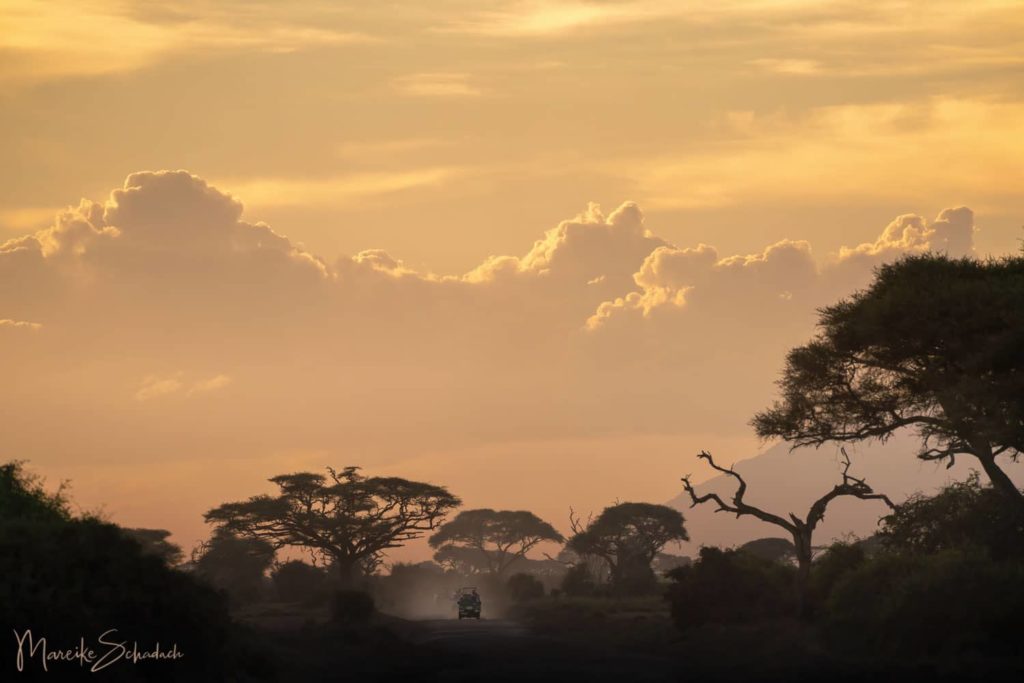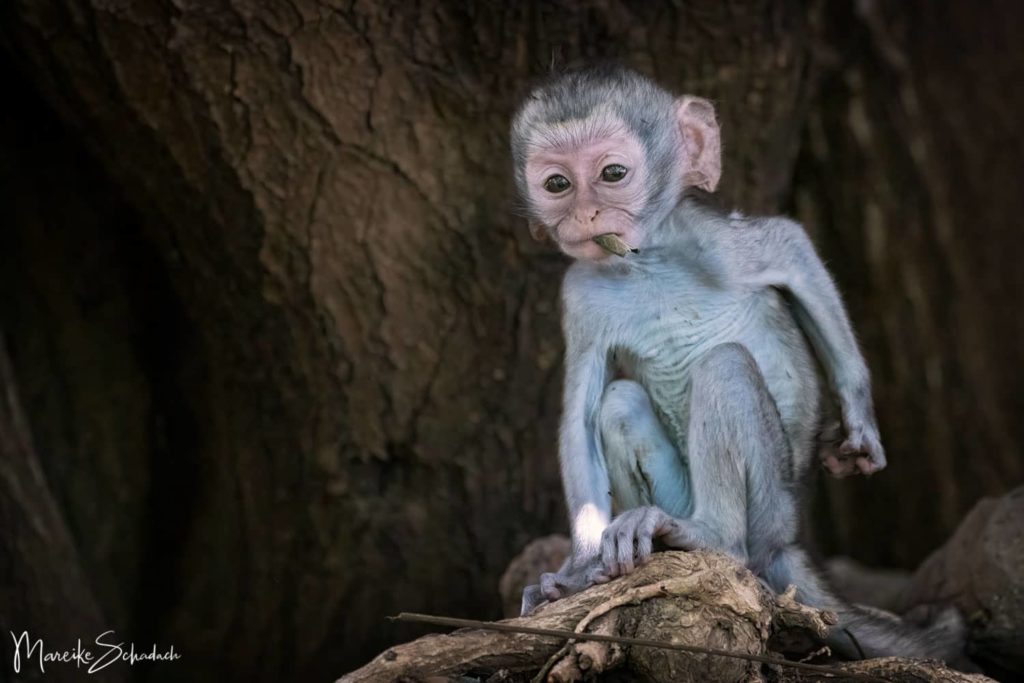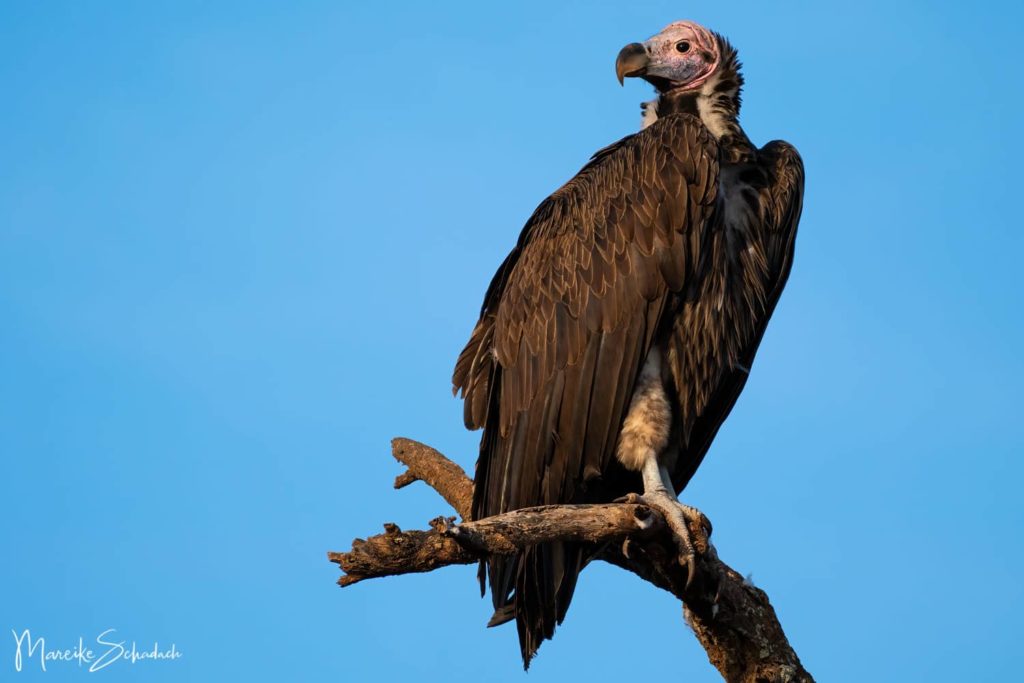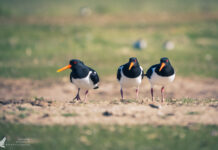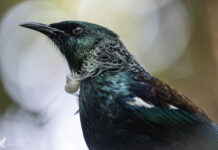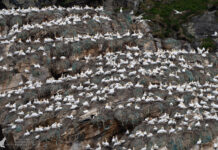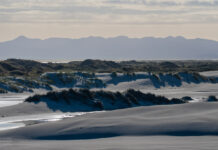Kenya. Amboseli National Park is one of the most popular parks in Kenya. It is known for its large herds of elephants and is also considered the best place to observe elephants. How about an elephant photo with Kilimanjaro in the background? Find out what you can see in Amboseli National Park and why it is so popular for safaris.
Unassigned, unpaid advertising. The article contains affiliate links*.
Highlights of a Safari in Amboseli National Park
Profile Amboseli National Park
Best Time for a Safari in Amboseli National Park
Dream View of the highest Mountain in Africa
Amboseli - the Home of the Elephants
Lions in Amboseli Park
The Swamp Enkong'u Narok - Bird Paradise and Bathtub
You want to see more safari photos?
Then have a look at my photo website.
Here you come to the gallery “Big Five & Co”.
Highlights of a Safari in Amboseli National Park
- Dream views of snow-capped Kilimanjaro, the highest mountain in Africa.
- One of the best places to see large herds of elephants up close.
- Amboseli ist Heimat der “Big Five”.
- The swamp Enkong'u Narok in the center of the park attracts 1000s of birds and other animals. Especially in the dry season there are best opportunities for wildlife watching.
- "Observation Hill" with information boards and wide view over Enkong'u Narok swamp.
- Wildlife is easy to find as much of the park is open savannah landscape.
- With over 600 species of birds, Amboseli is also an El Dorado for amateur ornithologists.
- Safaris in the golden morning and evening light are particularly rewarding.
What are the "Big Five"? The so-called "Big Five" are the large African animal species that are known to be dangerous and even deadly. They include lions, leopards, rhinos, elephants and buffalo. The term "Big Five" was introduced by big game hunters for the most difficult animals to hunt.
Profile Amboseli National Park
Location: On the border with Tanzania, 213 kilometers south of Nairobi.
Size: With 392 square kilometers one of the smallest national parks in Kenya.
Elevation: From 1,700 meters above sea level to the 2,760 meters high Ol Doinyo Orok
Name: Der Name Amboseli kommt von dem Maasai-Wort “Empusel”, was soviel wie salzig, Staub bedeutet.
Animals: About 80 species of mammals, including the "Big Five", wildebeests, giraffes, cheetahs, servals, baboons, monkeys, zebras, wild dogs, hyenas, dikdiks and small kudus. Over 600 species of birds, for example flamingos, pelicans, ostriches, African fish eagles, secretary eagles, South African crowned cranes and various species of kingfishers.
Entrance fee: Adults in high season $75; low season $60.
Tip: The park and the swamp are especially beautiful in the morning and evening light. It is best to choose a lodge near the swamp, for example Amboseli Serena Safari Lodge.
Best Time for a Safari in Amboseli National Park
Amboseli is a good destination all year round. Temperatures vary between 20-30 degrees Celsius. There is a rainy season in March and April, and in November and December. During the dry season the air is usually hazy from dust. You will have the clearest view of Kilimanjaro during the rainy season.
You are still looking for a safari provider for Kenya? We were on the road for 17 days with Natural World Kenya Safaris and were more than happy.
Dream View of the highest Mountain in Africa
Surely you all know the photos of Kilimanjaro, where in the foreground an elephant walks through the picture. Sometimes it is a lion or a giraffe. These photos were taken right here in Amboseli National Park.
Early in the morning a safari in Amboseli Park is the most beautiful!
Kilimanjaro, at 5895 m above sea level, is the highest mountain massif in Africa. However, its snow-covered peak Kibo often hides behind clouds in the afternoon. But in the morning, the air is usually clear and the view of the mountain massif, which is only about 50 kilometers away, is the best. The perfect backdrop for great photos.
Sad facts: Kilimanjaro's ice cap has been severely affected by global warming. Compared to 1912, the ice cap has decreased by 85% by 2020. By 2030, the peak is expected to be free of ice.
Amboseli - the Home of the Elephants
In 1979, there were about 1.3 million elephants in Africa. In Kenya alone, the population declined from 130,000 in 1973 to less than 20,000 in 1989, a drop of 85%. The reason for this catastrophic loss was the ivory trade.Today, on the other hand, the growing population as well as the progressive loss of habitat pose a new threat to the elephants.
The elephants in Amboseli National Park have been largely spared from poaching. The reason for this was the constant presence of researchers and tourists in the park as well as the support of the Maasai. Therefore, the population shows a natural age structure: from young calves to 60 year old elephant cows. Amboseli is known for its large herds of elephants. With around 1500 free-ranging elephants, the park is also considered the best place to observe elephants.
The best conditions for researching population dynamics and social structures in elephant families. But the studies with the Amboseli elephants have provided even more insights. Elephants communicate at a very sophisticated level and are also able to reason and solve problems. They celebrate births, maintain lifelong friendships and mourn the death of family members.
You want to know more about the elephants in Amboseli National Park? Then have a look at Amboseli Trust for Elephants .
Photo tip: In the morning and in the evening the elephant herds move from the surrounding forest areas to the central swamp and back again. They follow well-trodden paths and cross the tracks.
Lions in Amboseli Park
Lions spend 20 to 21 hours lounging. They hunt in the early morning, evening and night. On our second early morning safari in Amboseli, we were lucky enough to see two lions feeding after a successful night hunt. How did we find them? We followed the vultures as several flew in exactly the same direction. When we arrived, a group of vultures as well as several jackals and hyenas were already waiting for their opportunity to steal a bite from the killed wildebeest.
Kenya's lion population is estimated to have dropped by half since 2004, and the decline is feared to continue. Lions have been hunted in much of Africa for a variety of reasons, most notably conflict with humans.
Amboseli lions share a similar fate: the park is surrounded by ranches belonging to local Maasai communities. In the dry season, the Maasai are allowed to drive their cattle into the park to gain access to the water in the swamp area. As soon as a lion kills a cattle, the lions are chased.
The relationship between the pastoralists of Africa and the lion is complex. Lions are both a source of fear and a source of pride, as they represent strength and courage. Lion Guardians experts respond when lions attack livestock and tensions arise between animals and humans. In doing so, they help protect both the livelihoods of communities and the lives of lions.
Lions and other predators are critical to maintaining the balance in the Amboseli ecosystem. Without them, the population of herbivores would likely increase beyond the park's carrying capacity and destroy this fragile habitat.
The Swamp Enkong'u Narok - Bird Paradise and Bathtub
The landscape in Amboseli National Park is diverse and changes with the seasons. For example, Lake Amboseli can dry up completely during the dry season. The wetland, on the other hand, is fed by meltwater from the glacier on Kilimanjaro, which flows underground to here. This means that the animals always have fresh water to drink and take a cool bath, even in the dry season.
During the dry season, most of the animals and birds stay around the central swamp area Enkong'u Narok. Sometimes the animals seem stuck in the swamp, so deep do they dive into the cooling water. You can see how deep this is especially well with the elephants: their skin is light on top and dark underneath. The best view over the swamp you have from the "Observation Hill".
The species richness as well as the number of water birds is impressive. Most striking, however, are the countless flamingos, Egyptian geese and herons. The best observation possibilities are offered by the dam that leads through the swamp northwest of "Observation Hill". The king of the skies is the lesser spotted eagle. But the crown is worn by the beautiful South African Crowned Cranes, which you can recognize by the magnificent crown of yellow feathers on their heads.
Besides the lake and the swamp area, the park consists largely of dry savannah with short vegetation,making it easy to find and observe the animals.
Book recommendations for Kenya
You want to know where the journey goes? Then I can recommend these books* about Kenya.
You can order the books at Amazon by clicking on the pictures. If you buy a product through one of these affiliate links, I get a small commission and you help me to keep filling Fernweh-Motive with interesting articles. The product will not be more expensive for you and you do me a huge favor.
Which park is your favorite for a safari in Kenya - also the Amboseli? Do you have any questions or suggestions about my article? If yes, please write me a comment!
Do you want to know when there are new articles on my blog? Then follow me on Facebook, Pinterest or Instagram. I would also be very happy if you share my article with your friends.
Recommendations for further Reading
Do you love wildlife encounters as much as I do? Then you might also be interested in my articles about The Reindeer of the Cairngorms in Scotland or about the Beluga Whales of the Solowezki Islands.
